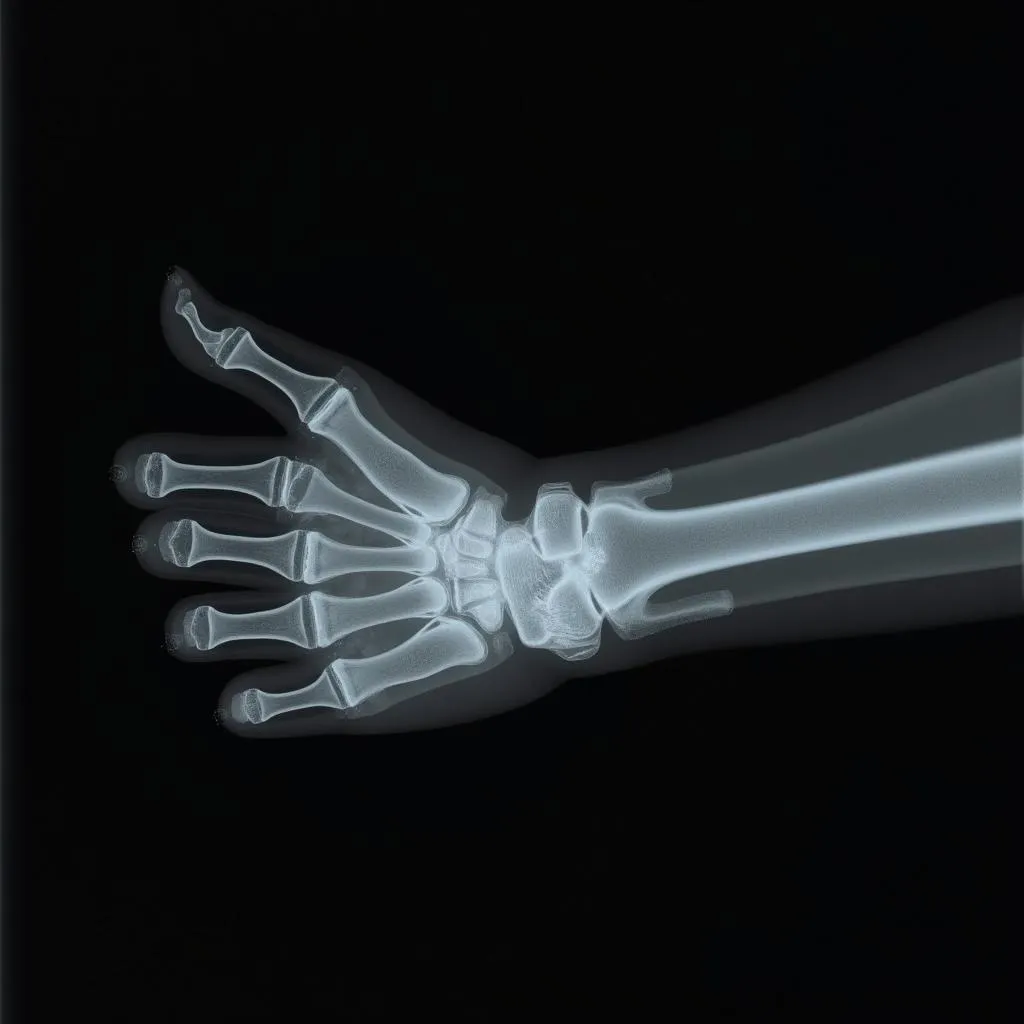“Cái răng cái cẳng, đánh nhau thì gãy” – this Vietnamese proverb reminds us of the importance of strong bones, especially for our furry friends. Just like us, our dogs need strong bones to support their bodies and allow them to move freely. Two essential bones in the dog’s foreleg are the radius and ulna.
What are the radius and ulna?
The radius and ulna are the two long bones that make up the forearm of a dog. They run parallel to each other, with the radius on the thumb side and the ulna on the pinky side. These bones work together to provide support and stability for the paw, allowing dogs to run, jump, and play with ease.
 X-ray image of a dog's foreleg showing the radius and ulna
X-ray image of a dog's foreleg showing the radius and ulna
Why are the radius and ulna important?
The radius and ulna are crucial for a dog’s mobility and overall health. They play a vital role in:
- Supporting the weight of the body: The radius and ulna bear the weight of the dog’s body, especially during activities like running and jumping.
- Enabling movement: These bones allow the paw to rotate and bend, enabling dogs to walk, run, and perform other movements.
- Protecting other structures: The radius and ulna protect the delicate tendons and ligaments in the forearm.
Common problems with the radius and ulna
Like any other bone, the radius and ulna can be susceptible to various problems, including:
- Fractures: Broken bones are a common injury in dogs, especially those who are active.
- Osteosarcoma: This type of bone cancer often affects the radius and ulna in older dogs.
- Deformities: Some dogs are born with deformities in the radius or ulna, which can affect their mobility.
- Infections: Bacterial infections can affect the bones, causing pain, swelling, and inflammation.
How to keep your dog’s radius and ulna healthy
There are many ways to keep your dog’s radius and ulna healthy, including:
- Providing a balanced diet: Feeding your dog a high-quality diet rich in calcium and phosphorus is essential for strong bones.
- Regular exercise: Regular exercise helps strengthen muscles and bones, which can reduce the risk of fractures and other injuries.
- Maintaining a healthy weight: Obesity can put extra stress on the bones, increasing the risk of injury.
- Avoiding dangerous activities: Certain activities, such as jumping from high heights, can put excessive stress on the radius and ulna.
What to do if your dog has a problem with the radius or ulna
If you suspect your dog has a problem with the radius or ulna, it’s important to consult a veterinarian immediately. They can diagnose the problem and recommend the best course of treatment. Treatment options may include:
- Rest: Rest is often the first step in treating injuries to the radius and ulna.
- Medications: Pain relievers and antibiotics can help reduce pain and inflammation.
- Surgery: In some cases, surgery may be required to repair a fracture or remove a tumor.
Conclusion
The radius and ulna are essential bones that play a vital role in your dog’s mobility and overall health. By taking steps to keep these bones healthy, you can help ensure your furry friend can continue to enjoy an active and happy life. If you have any concerns about your dog’s radius or ulna, consult a veterinarian for advice and treatment. Remember, “An ounce of prevention is worth a pound of cure,” so don’t hesitate to reach out to a professional for any worries you might have.
We hope this information has been helpful. Don’t forget to check out our website for more helpful resources and tips on keeping your pet healthy and happy. If you need assistance, please contact us at our hotline: 0372960696, email: [email protected] or visit our store at 260 Cầu Giấy, Hà Nội. We are available 24/7 to assist you with your pet’s needs.
Leave a Reply
You must be logged in to post a comment.